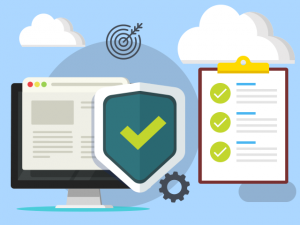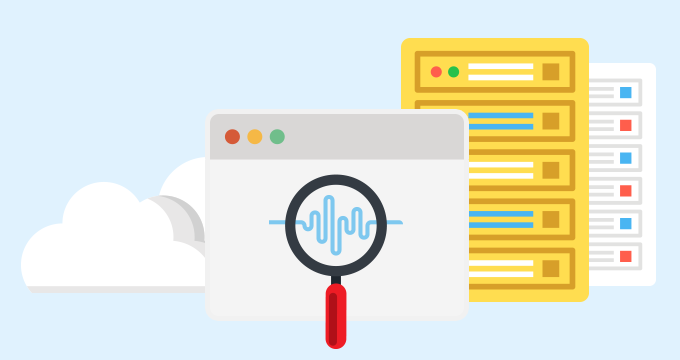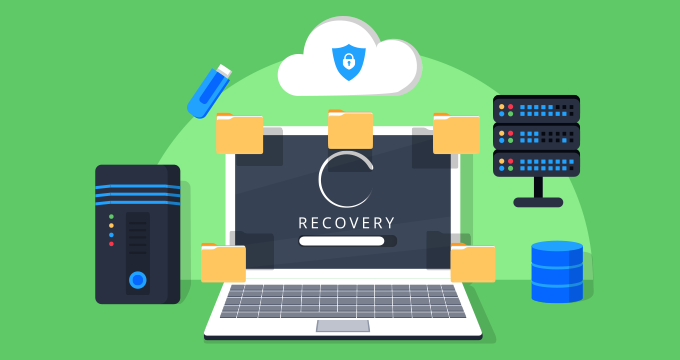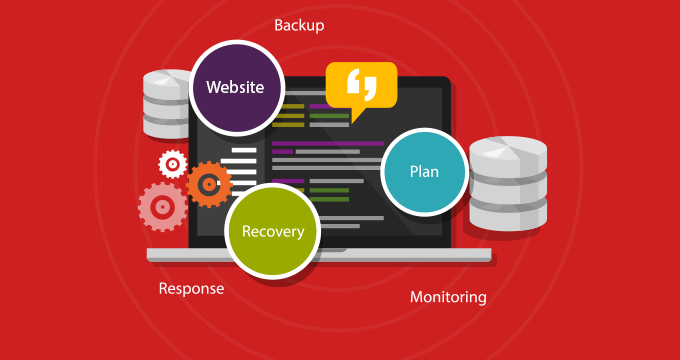Do you have a recovery plan for your site? Here are some tips for you to keep in mind

Maintaining an uninterrupted online presence is not an easy task. An impeccable 100% uptime is something that few companies could afford.
This is why, apart from selecting the most reliable platforms for their sites, each small business needs to invest time and effort in creating the right recovery plan so as to avoid unnecessary downtime and be able to quickly restore their service, if necessary.
Check out our list of measures that you could take to make sure you are prepared to respond to any eventual performance issues that almost no one online is immune to.
Service Monitoring
Going offline does not necessarily mean that your hosting provider has uptime issues.
So do not only rely on your host’s notification system to track your site availability.
Instead, use a website monitoring service which instantly notifies you via email or SMS if your site is down at a particular location.

You could choose from a variety of tools both paid and free depending on your requirements.
In most cases, you will get instant messages regarding service interruption even if you have only been offline for a few seconds!
Check out our list of free site monitoring tools we have compiled for you.
Content Backups
Performing a regular, preferably daily, backup of your sites and projects is a basic requirement.
Most web hosting providers will offer you a reliable daily backup service you can count on.
So, here is how you could act in the event of content loss on your site:
- Lost data due to an issue on your end – in this case, you could ask your provider to restore your site from a backup. It should happen within an hour on average, as long as they have performed backups as promised;
- Lost data due to a hosting provider’s server issue – in the event that your provider’s server becomes corrupted and the projects you have located there are compromised you can ask the provider to move your account to a safe server and request that the content is restored from backup since normally backups are run on a separate server.
- Lost data due to a hosting provider’s network issue – in the event of a major problem with your hosting provider’s network or infrastructure, you are recommended to directly move to another provider; whether they can restore your sites from backup or not – you’re better off moving away to avoid any other eventual long-term damages to your online presence in the future;

For critical scenarios like the one mentioned above, experts advise keeping an off-provider copy of your entire website as an extra just-in-case measure.
To do that you can use free software such as FileZilla to copy all of the data and files from your account with the provider to your own internal systems.
On our web hosting platform we offer offsite backups as an extra backup option, which you can freely take advantage of.
This allows you to automatically backup your entire (or selected) site content from your hosting account to your Google Drive or Dropbox account directly.
If you are on the cPanel platform, you will be able to generate a full or partial backup of your data with a few clicks of the mouse from your cPanel dashboard.
Handling an Outage
If your site faces an outage, the first thing you should do is … not panic.
And the sure-fire way to avoid panic is to have a recovery plan at hand.
First, you need to check with your hosting provider to see if the problem is on their end and ask for an ETA on a resolution if it is.
On the ProperStatus portal and in our twitter account you can check for any updates regarding the status of our servers.
You can check sites such as DownForEveryoneOrJustMe.com to make sure the issue isn’t on your end only.
Then try your best to notify your customers/users about the problem and when you expect the site to be back online, you can do this via your social media accounts.
If the issue gets complicated then restoring your site quickly and thoroughly could be a fairly technical process.
So, if you don’t have the technical expertise for such scenarios, make sure you have a reliable IT consultant at hand who you can call in an emergency to restore your site promptly.

Also, it would be good if you check the elements of your recovery plan regularly, preferably once per year.
You can check if the communication channels of your hosting provider are updated regularly, so that you do no miss out on any critical service update from them.
Also, you can check if the offsite backups you make are running properly to avoid any eventual data corruption.
And, finally, make sure that the IT consultant you rely on is still available and if they stick to their response times.
If the IT consultant is not able to take your emergency request at a certain time, will there be anyone else to take over?
***
Your web hosting provider will do its best to ensure the service uptime guarantee (99.9% in most cases) it has promised.
However, this is only a guarantee on the server side and does not include the threat of hacking or virus infection, etc.
This is the real world and bad things will eventually happen – so it’s best to be prepared and have a quick recovery plan for your website(s) at hand.
Originally published Friday, October 12th, 2018 at 3:47 pm, updated July 8, 2024 and is filed under Online Security.Tags: online security, data backups


Leave a Reply